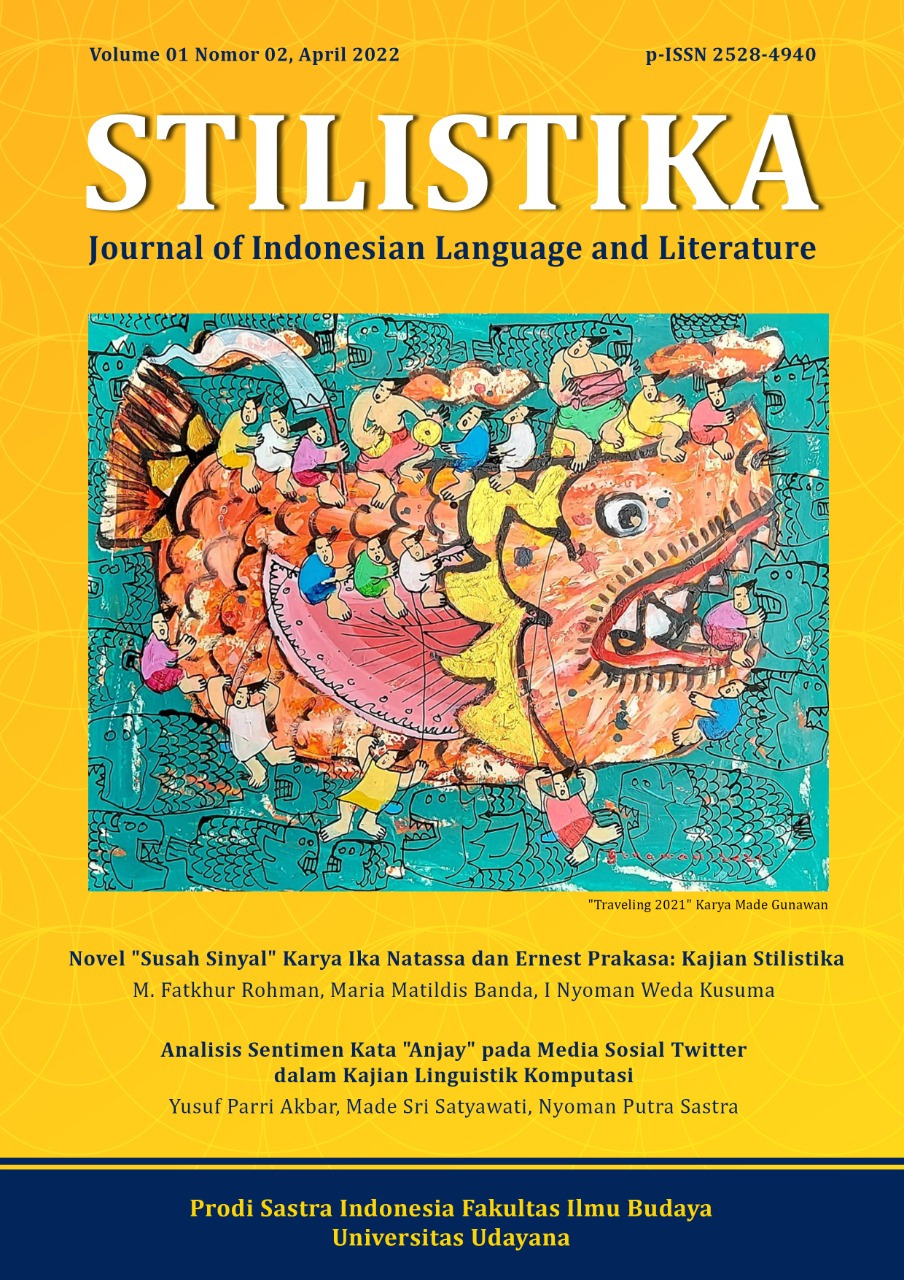Analisis Sentimen Kata Anjay pada Media Sosial Twitter Dalam Kajian Linguistik Komputasi
Abstract
Language serves as a means of supporting activities, ideas, and human behavior. Every form of human life can be expressed in language. Language in everyday use depends on the user and the situation of use. Because of these two things, various variations of language are used in communication. In mid-2020, Indonesia was shocked by the ban on the use of the word anjay. The purpose of this study was to determine the classification of text mining methods in filtering the word anjay, to find out how the sentence structure is in each tweet, to find out how the nuances of the meaning of the word anjay in each tweet. From the k-fold cross validation process, the average accuracy result is 50%, the precision result is 59.2%, the recall result is 47.3%, and the f-measure result is 41.2%. The word anjay is found in phrases or nouns 252 tweets, verbs 232 tweets, adjectives 187 tweets, pronouns 32 tweets, numerals 16 tweets, prepositions 12 tweets, and adverbs 11 tweets. The word anjay is found in 350 tweets of declarative sentences, 283 exclamative tweets, 78 interrogative tweets, and 31 imperative tweets. The word anjay has various interjections, including; interjection of admiration, interjection of wonder, interjection of gratitude, interjection of surprise, interjection of hope, interjection of anger, interjection of curses, and interjection of hope. In terms of nuances of meaning using redundancy, the word anjay has no influence in a sentence. The word anjay serves as an affirmation of the core of a sentence.
Downloads
References
Goziyah, dan Maulana Yusuf. 2019. “Bahasa Gaul (Prokem) Generasi Milenial dalam Media Sosial”. Tangerang: Universitas Muhammadiyah Tangerang.
Harijanto, Servasius Dwi. 2019. Analisis Sentimen Pada Twitter Menggunakan Multinominal Naive Bayes. Yogyakarta: Universitas Sanata Dharma.
Husa, Shoula Maharani. 2017. “Bentuk dan Pemakaian Kata Slang Pada Media Sosial Line (Akun Batavia Undip)”. Semarang: Universitas Negeri Diponegoro.
Kaplan, Andreas & Michael HaenLein. 2010. “User Of The World, Unite! The Challenges and Opportunities Of Social Media”. Business Horizons:Kelley School of Business, Indiana University.
Maulana, Rizky dan Sri Redjeki. 2016. Analisis Sentimen Pengguna Twitter Menggunakan Metode Support Vector Machine Berbasis Cloud Computing. Yogyakarta: STIMIK AKAKOM.
Palmer, F.R. 1997. Semantics: A New Outline. Cambridge: Cambridge University Press.
Ramlan. 2005. “Ilmu Bahasa Indonesia: Sintaksis” .Yogyakarta: CV Karyono.
Sudaryanto. 2015. Metode dan Aneka Teknik Analisis Bahasa. Yogyakarta: Sanata Dharma University Press






